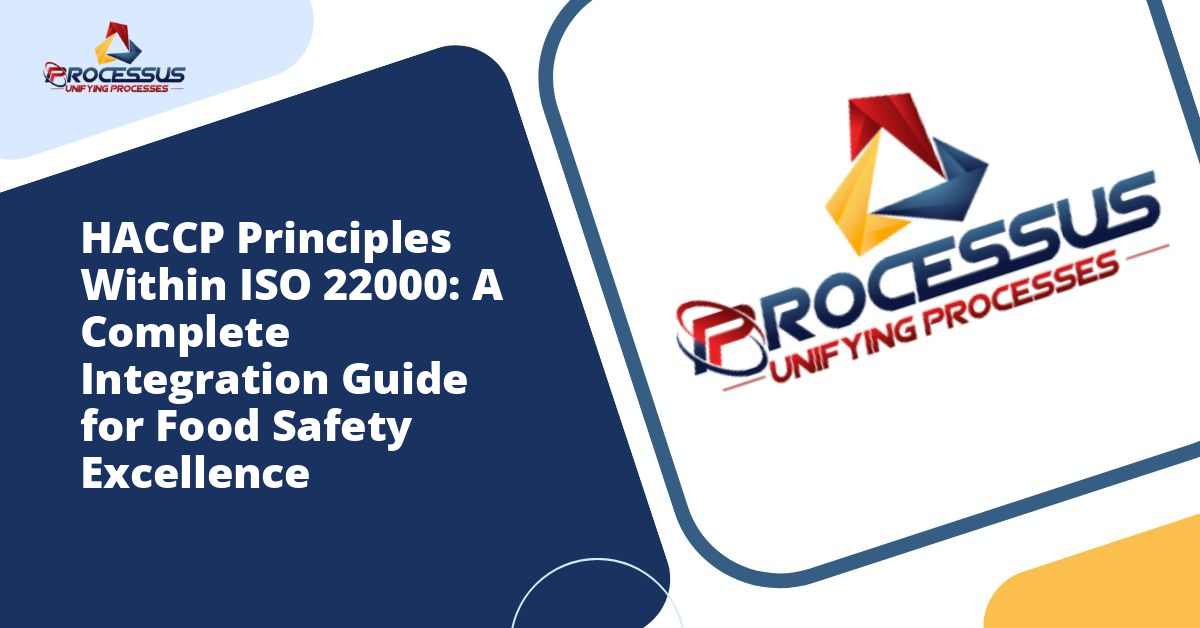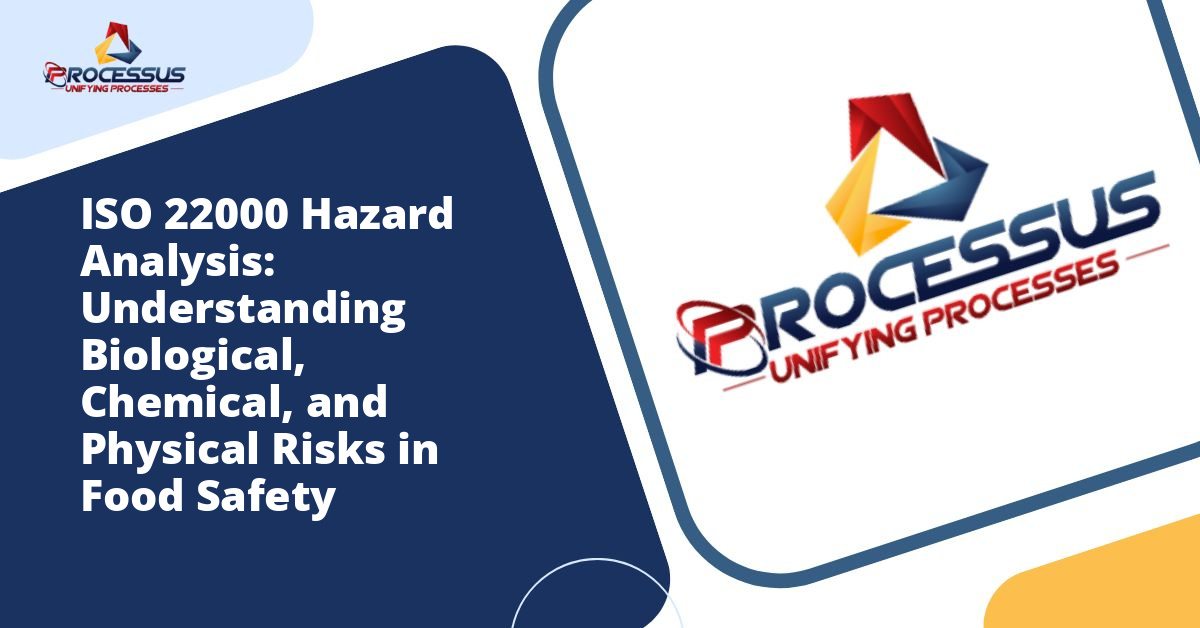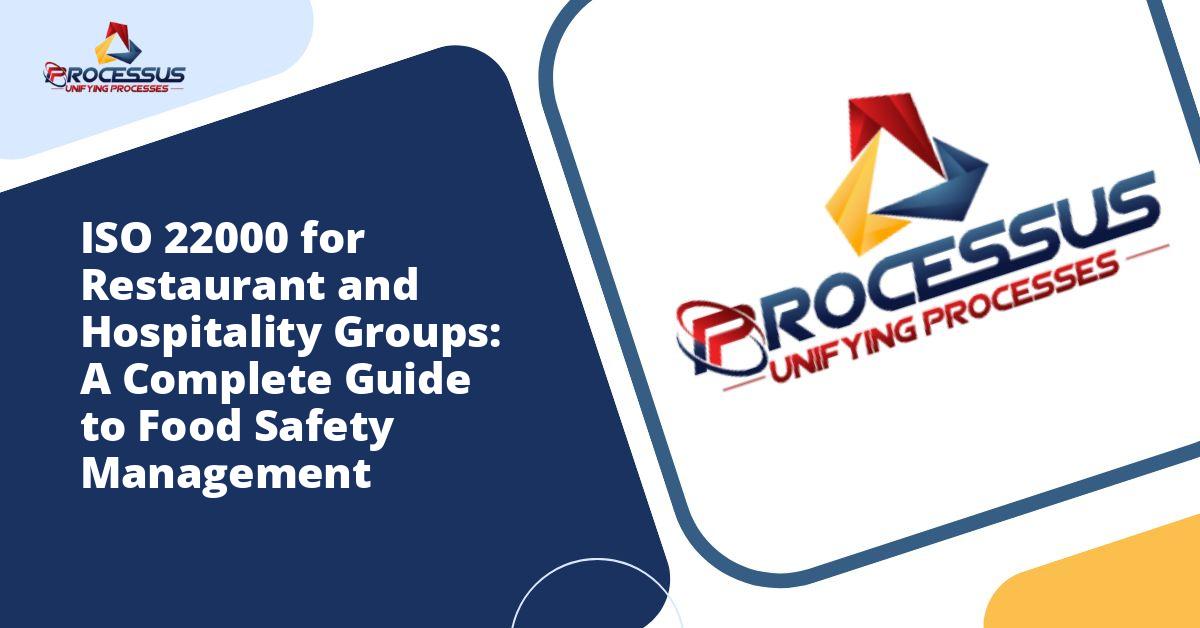Food safety management has become increasingly critical in our globalized food industry, where products traverse multiple borders and undergo complex processing procedures. Organizations seeking to establish robust food safety systems must understand how HACCP (Hazard Analysis and Critical Control Points) principles integrate seamlessly with ISO 22000 standards. This comprehensive guide explores the relationship between these two essential frameworks and provides practical insights for successful implementation.
Understanding the Foundation: What is HACCP?
HACCP represents a systematic approach to identifying, evaluating, and controlling food safety hazards throughout the production process. Originally developed in the 1960s for NASA’s space program to ensure food safety for astronauts, HACCP has evolved into an internationally recognized methodology that forms the backbone of modern food safety management. You might also enjoy reading about ISO 22000:2018 Implementation Roadmap for Food Manufacturers: A Complete Guide to Food Safety Excellence.
The system focuses on prevention rather than detection, addressing potential hazards before they compromise product safety. These hazards fall into three main categories: biological (bacteria, viruses, parasites), chemical (cleaning agents, pesticides, allergens), and physical (metal fragments, glass, plastic). By identifying critical control points where these hazards can be prevented, eliminated, or reduced to acceptable levels, organizations create a proactive defense against foodborne illness and contamination.
Introduction to ISO 22000: The Comprehensive Standard
ISO 22000 represents the international standard for food safety management systems, published by the International Organization for Standardization. Unlike HACCP, which focuses specifically on hazard analysis and critical control points, ISO 22000 provides a complete management system framework that encompasses organizational context, leadership, planning, support, operation, performance evaluation, and improvement.
This standard was specifically designed to harmonize different food safety requirements globally and provide a unified approach that applies to all organizations in the food chain, regardless of size or position. From farmers and producers to processors, transporters, retailers, and food service providers, ISO 22000 offers a flexible yet comprehensive framework that ensures food safety at every stage.
The Seven Principles of HACCP Explained
Principle 1: Conduct Hazard Analysis
The first principle requires organizations to identify potential hazards that could occur at each step of the food production process. This comprehensive analysis examines raw materials, processing steps, storage conditions, distribution methods, and intended use of the final product. Teams must evaluate the likelihood of hazard occurrence and the severity of potential health consequences, creating a foundation for the entire system.
Principle 2: Determine Critical Control Points
Critical Control Points (CCPs) are specific locations, steps, or procedures in the food production process where control measures can be applied to prevent, eliminate, or reduce identified hazards to acceptable levels. Determining CCPs requires careful judgment and often involves using decision trees or flow diagrams to systematically evaluate each process step. Common examples include cooking temperatures, cooling procedures, metal detection, and specific sanitation points.
Principle 3: Establish Critical Limits
For each identified CCP, organizations must establish critical limits that separate acceptable from unacceptable conditions. These limits must be measurable and based on scientific evidence, regulatory requirements, or industry standards. Examples include specific temperature ranges, time durations, pH levels, water activity measurements, or visual appearance criteria. Critical limits serve as the boundaries that, when exceeded, indicate a potential food safety problem.
Principle 4: Establish Monitoring Procedures
Monitoring involves planned observations or measurements to assess whether CCPs remain under control and operate within established critical limits. Organizations must determine what will be monitored, how monitoring will occur, the frequency of monitoring activities, and who will perform these tasks. Effective monitoring procedures provide timely information, allowing for adjustments before loss of control occurs.
Principle 5: Establish Corrective Actions
When monitoring indicates that a CCP has deviated from established critical limits, predetermined corrective actions must be implemented immediately. These actions address two essential aspects: first, bringing the process back under control, and second, determining the disposition of affected products. Documentation of corrective actions provides valuable information for system improvement and regulatory compliance.
Principle 6: Establish Verification Procedures
Verification activities confirm that the HACCP system functions as intended and effectively manages identified hazards. These procedures include reviewing records, calibrating monitoring equipment, conducting targeted testing, observing monitoring activities, and reviewing consumer complaints. Verification differs from monitoring in that it confirms the overall system effectiveness rather than simply checking if critical limits are met.
Principle 7: Establish Documentation and Record Keeping
Comprehensive documentation demonstrates system implementation and effectiveness. Required records include hazard analysis documentation, CCP determination rationale, critical limit establishment basis, monitoring records, corrective action documentation, verification procedures and results, and record keeping procedures. Proper documentation supports regulatory compliance, facilitates internal audits, and provides evidence of due diligence.
How ISO 22000 Incorporates HACCP Principles
ISO 22000 explicitly incorporates all seven HACCP principles within its structure, but expands beyond them to create a more comprehensive management system. The standard embeds HACCP within Clause 8 (Operation), specifically in sections addressing operational planning and control, prerequisite programs, and the hazard analysis system.
This integration means that organizations implementing ISO 22000 automatically address HACCP requirements while also establishing broader management system elements. The standard requires organizations to plan, implement, operate, maintain, and update a food safety management system that incorporates interactive communication, system management, prerequisite programs, and HACCP principles working together synergistically.
Key Differences Between HACCP and ISO 22000
While HACCP forms a crucial component of ISO 22000, several important differences distinguish these frameworks. HACCP focuses exclusively on product safety and the production process, while ISO 22000 addresses organizational management aspects including leadership commitment, resource allocation, competence requirements, communication protocols, and continual improvement mechanisms.
ISO 22000 requires establishment of prerequisite programs (PRPs) and operational prerequisite programs (oPRPs) that create the basic environmental and operational conditions necessary for producing safe food. These programs address aspects such as facility design, equipment maintenance, personnel hygiene, pest control, and supplier approval, which HACCP mentions but does not explicitly require.
Another significant difference involves the management review process. ISO 22000 mandates regular management reviews examining system performance, resource adequacy, and improvement opportunities, ensuring top management engagement. HACCP does not include this requirement, potentially limiting organizational commitment and resource allocation.
ISO 22000 also incorporates a stronger emphasis on communication, requiring both external communication with suppliers, customers, regulatory authorities, and other relevant parties, and internal communication ensuring that food safety information reaches all personnel who need it. This comprehensive communication framework exceeds basic HACCP requirements.
Prerequisites for Successful Integration
Leadership Commitment and Organizational Culture
Successful integration begins with visible, sustained commitment from top management. Leaders must allocate adequate resources, establish food safety policy, assign roles and responsibilities, and create a culture where food safety takes precedence over competing priorities. This commitment extends beyond initial implementation to ongoing support and continual improvement efforts.
Competent Food Safety Team
Organizations must establish a multidisciplinary food safety team with collective knowledge of products, processes, equipment, hazards, and control measures. Team members require appropriate education, training, and experience to conduct effective hazard analysis, establish appropriate control measures, and maintain the management system. External expertise may be necessary when internal competence gaps exist.
Comprehensive Prerequisite Programs
Before implementing HACCP principles, organizations must establish robust prerequisite programs addressing basic operational and environmental conditions. These programs typically include infrastructure maintenance, cleaning and sanitation procedures, pest control, water quality management, personnel hygiene, receiving and storage protocols, and recall procedures. Strong PRPs reduce the number of hazards requiring management through CCPs.
Information Management Systems
Effective integration requires systems for capturing, analyzing, and maintaining documentation and records. Whether paper-based or electronic, these systems must ensure information remains accessible, accurate, and protected from loss or unauthorized changes. Many organizations find that computerized systems facilitate data analysis, trend identification, and evidence collection for verification and auditing purposes.
Step-by-Step Integration Process
Step 1: Gap Analysis and Planning
Begin by assessing current food safety practices against both HACCP principles and ISO 22000 requirements. This gap analysis identifies existing strengths, areas requiring development, and resources needed for successful implementation. Use findings to develop a detailed implementation plan with clear objectives, timelines, responsibilities, and success metrics.
Step 2: Establishing Prerequisite Programs
Develop and implement comprehensive prerequisite programs covering all basic food safety conditions. Document procedures, establish monitoring activities, and train personnel on their roles within these programs. Verify that PRPs function effectively before proceeding to hazard analysis, as weak prerequisites compromise the entire system.
Step 3: Conducting Comprehensive Hazard Analysis
Assemble your food safety team and systematically analyze each product and process to identify potential biological, chemical, and physical hazards. Evaluate hazard likelihood and severity, considering factors such as raw material characteristics, process steps, equipment design, personnel practices, and intended product use. Document all considerations and decisions thoroughly.
Step 4: Determining Control Measures
For each identified hazard, determine appropriate control measures. Classify these measures as prerequisite programs, operational prerequisite programs, or critical control points based on their specificity and criticality to hazard control. This classification process represents a key feature of ISO 22000 that provides greater flexibility than traditional HACCP approaches.
Step 5: Establishing Monitoring and Verification
Develop detailed monitoring procedures for all CCPs and oPRPs, specifying what will be monitored, measurement methods, frequencies, and responsible personnel. Establish verification activities that confirm system effectiveness, including calibration schedules, record reviews, testing protocols, and internal audit programs. Ensure both monitoring and verification activities generate appropriate records.
Step 6: Documentation and Training
Compile comprehensive documentation including the food safety policy, scope of the management system, procedures, work instructions, and forms for record keeping. Develop and deliver training programs ensuring all personnel understand their roles, the importance of food safety, and specific procedures they must follow. Verify training effectiveness through assessment and observation.
Step 7: System Implementation and Operation
Implement the integrated system across all relevant operations, ensuring procedures are followed consistently. Monitor performance closely during initial implementation, addressing problems promptly and adjusting procedures as necessary. Collect and analyze data systematically to confirm that control measures function as intended and product safety is maintained.
Step 8: Internal Auditing
Conduct internal audits evaluating system conformity with planned arrangements, HACCP principles, ISO 22000 requirements, and organizational specifications. Audits should examine both system implementation and effectiveness, identifying nonconformities and opportunities for improvement. Address audit findings through corrective actions and preventive measures.
Step 9: Management Review
Hold regular management reviews examining system performance, resource adequacy, food safety policy suitability, and continual improvement opportunities. Reviews should consider audit results, customer feedback, process performance, product conformity, corrective actions, and changes affecting the management system. Management reviews demonstrate leadership engagement and drive improvement.
Common Implementation Challenges and Solutions
Resistance to Change
Personnel may resist new procedures, documentation requirements, or monitoring activities. Address resistance through clear communication about benefits, involvement of staff in system development, comprehensive training, and visible management support. Celebrate successes and recognize individuals who contribute positively to implementation efforts.
Resource Constraints
Organizations often struggle with limited budgets, personnel, time, or expertise. Prioritize activities based on risk, phase implementation to spread costs, seek external expertise where necessary, and clearly demonstrate return on investment through reduced waste, fewer recalls, improved efficiency, and enhanced market access. Many organizations find that initial investments are recovered through operational improvements.
Documentation Overload
Excessive documentation can overwhelm organizations and obscure critical information. Focus on creating necessary and useful documentation that supports operations rather than simply satisfying auditors. Use visual management tools, checklists, and flow diagrams to simplify communication. Regularly review documentation to eliminate obsolete or redundant materials.
Maintaining System Effectiveness
Systems can deteriorate over time as procedures become outdated, personnel change, or complacency develops. Maintain effectiveness through regular verification activities, internal audits, management reviews, and continual improvement initiatives. Keep the system dynamic by updating it in response to new hazards, process changes, regulatory developments, and lessons learned from incidents.
Benefits of Integrated Implementation
Organizations that successfully integrate HACCP principles within ISO 22000 realize numerous advantages. These include enhanced food safety performance through comprehensive, systematic hazard management; improved regulatory compliance as the system addresses both HACCP and management system requirements; increased operational efficiency through standardized procedures and reduced duplication; better communication across the organization and with external stakeholders; enhanced credibility with customers, regulators, and consumers; improved employee engagement through clear roles and systematic training; and stronger competitive positioning in markets where food safety certification provides advantages.
The integrated approach also facilitates alignment with other management systems such as ISO 9001 (quality) and ISO 14001 (environment), enabling organizations to achieve synergies and reduce system complexity. This integration supports more efficient auditing, reduces documentation burden, and creates a unified management framework.
Maintaining and Improving Your Integrated System
Implementation represents just the beginning of the food safety management journey. Organizations must commit to maintaining and continually improving their integrated systems to realize lasting benefits. This requires ongoing monitoring of system performance, regular updating of hazard analyses as products and processes change, periodic review of prerequisite programs, refresher training for personnel, participation in industry forums to learn about emerging hazards and best practices, and systematic analysis of incidents and near-misses to identify improvement opportunities.
Continual improvement should focus not only on addressing problems but also on optimizing processes, reducing variation, enhancing efficiency, and strengthening food safety culture. Organizations should establish measurable food safety objectives and track progress systematically, using data to drive improvement decisions.
Conclusion
The integration of HACCP principles within ISO 22000 creates a powerful framework for managing food safety that combines the proven effectiveness of hazard analysis and critical control points with comprehensive management system principles. This integrated approach addresses not only technical aspects of food safety but also organizational elements essential for sustained success.
Organizations embarking on this integration journey should recognize that success requires commitment, resources, and persistence. However, the benefits far exceed the investment, resulting in safer products, more efficient operations, enhanced reputation, and improved market access. Whether you are starting from scratch or enhancing existing programs, understanding how HACCP principles and ISO 22000 work together provides the foundation for food safety excellence.
By following the guidance in this comprehensive integration guide, organizations across the food chain can develop robust, effective food safety management systems that protect consumers, satisfy regulatory requirements, and support business objectives. The path to food safety excellence begins with understanding these frameworks and committing to their thorough, systematic implementation.







